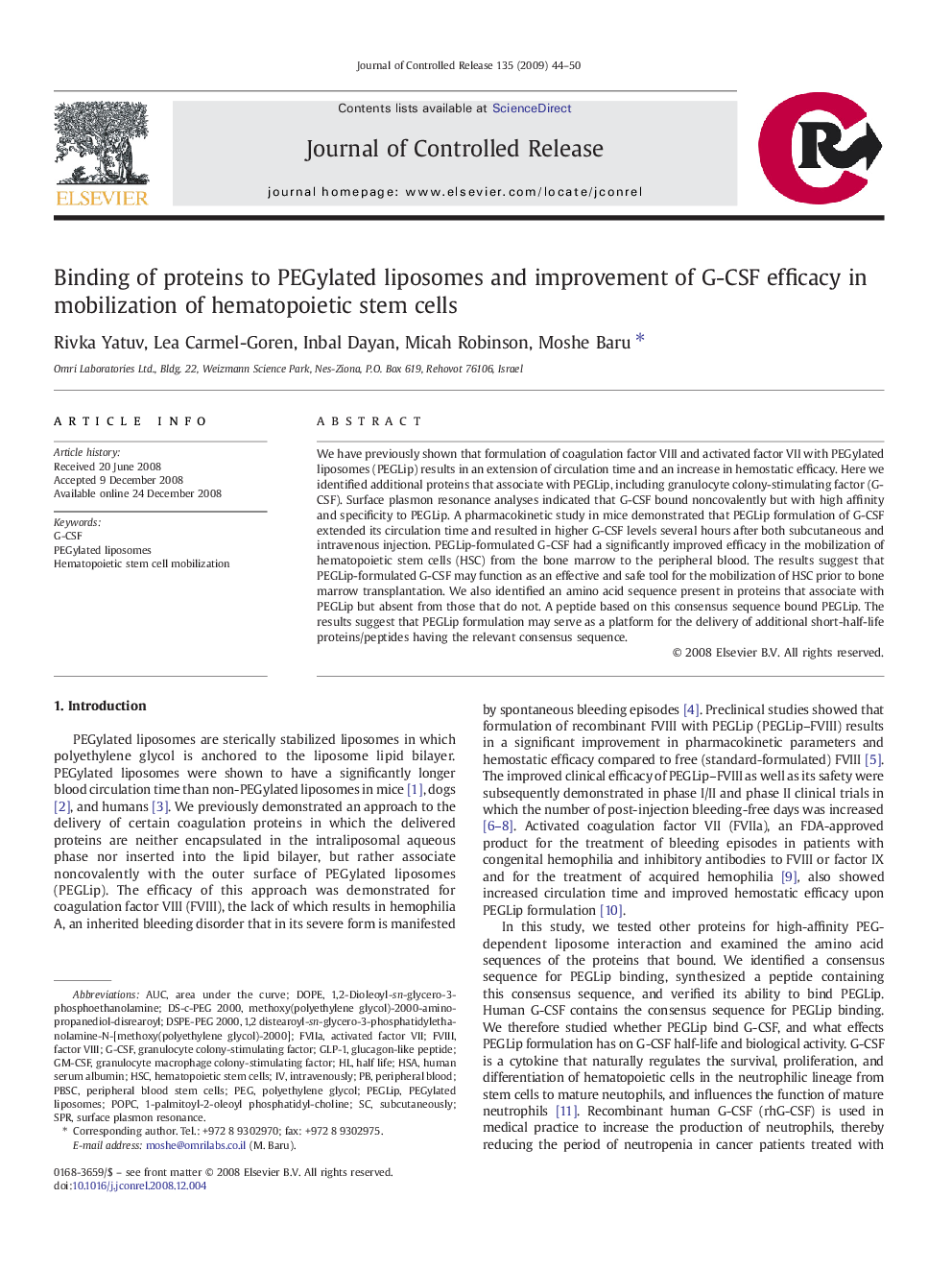| Article ID | Journal | Published Year | Pages | File Type |
|---|---|---|---|---|
| 1426379 | Journal of Controlled Release | 2009 | 7 Pages |
We have previously shown that formulation of coagulation factor VIII and activated factor VII with PEGylated liposomes (PEGLip) results in an extension of circulation time and an increase in hemostatic efficacy. Here we identified additional proteins that associate with PEGLip, including granulocyte colony-stimulating factor (G-CSF). Surface plasmon resonance analyses indicated that G-CSF bound noncovalently but with high affinity and specificity to PEGLip. A pharmacokinetic study in mice demonstrated that PEGLip formulation of G-CSF extended its circulation time and resulted in higher G-CSF levels several hours after both subcutaneous and intravenous injection. PEGLip-formulated G-CSF had a significantly improved efficacy in the mobilization of hematopoietic stem cells (HSC) from the bone marrow to the peripheral blood. The results suggest that PEGLip-formulated G-CSF may function as an effective and safe tool for the mobilization of HSC prior to bone marrow transplantation. We also identified an amino acid sequence present in proteins that associate with PEGLip but absent from those that do not. A peptide based on this consensus sequence bound PEGLip. The results suggest that PEGLip formulation may serve as a platform for the delivery of additional short-half-life proteins/peptides having the relevant consensus sequence.
Graphical abstractBinding of proteins to PEGylated liposomes is dependent on an amino acid consensus sequence (A). Formulation of G-CSF with PEGylated liposomes significantly improves its efficacy in mobilization of hematopoietic stem cells (B).Figure optionsDownload full-size imageDownload as PowerPoint slide
